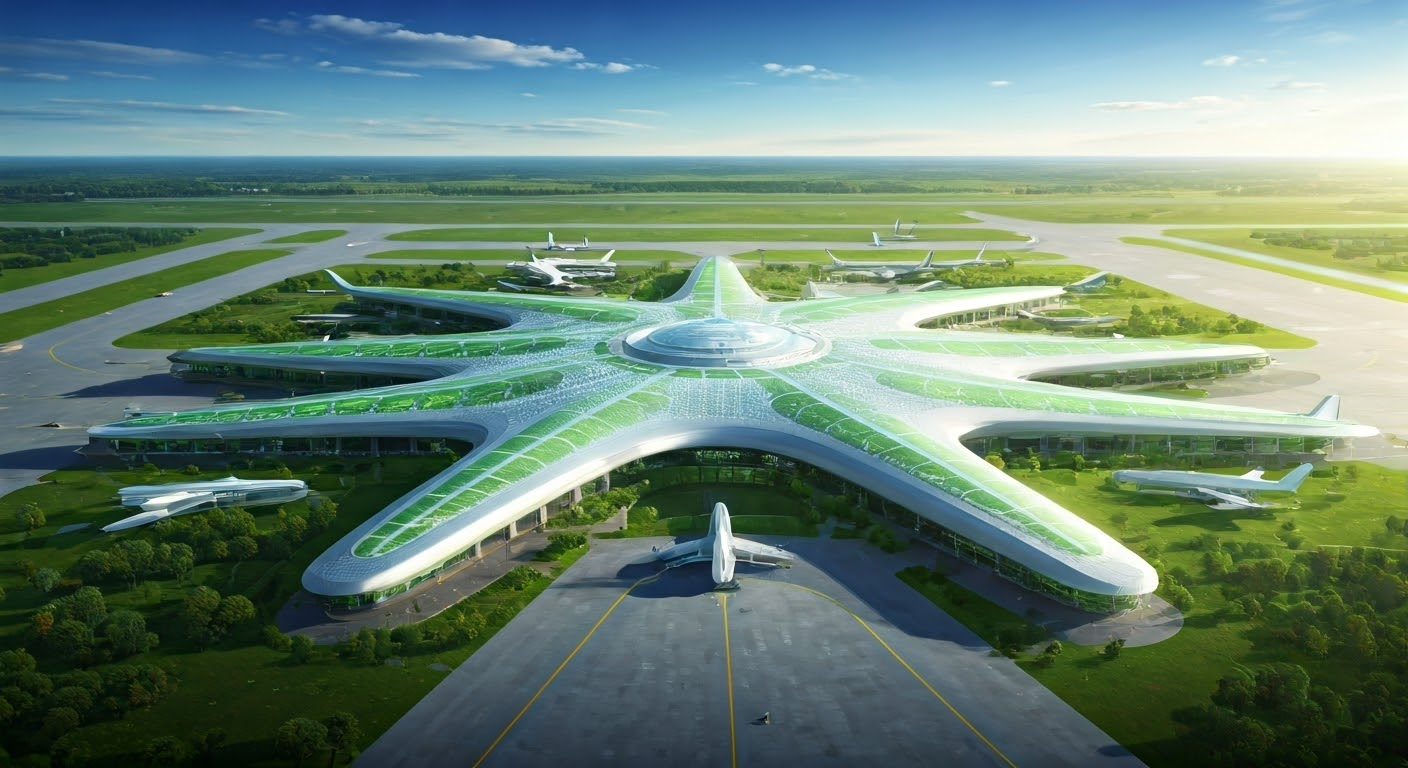Key Highlights
- A new report reveals a stark conflict between EU airport expansion plans and climate targets.
- Projections show European aviation emissions barely decreasing by 2049, despite industry pledges.
- The report warns that relying on unsustainable biofuels won’t compensate for projected traffic growth.
- Doubling of passenger numbers by 2050 would necessitate massive e-kerosene production, exceeding current capabilities.
- Critics urge a shift in strategy, including halting airport expansion and promoting sustainable alternatives like rail.
Introduction
The European Union has a big problem. They need to balance the growth of the aviation sector with their climate change goals. The EU wants to cut emissions a lot. However, the current growth in the aviation industry, like airport expansions and rising passenger traffic, makes it hard to reach a cleaner and greener future.
The Environmental Impact of Expanding EU Airport Capacity

Expanding airport capacity in the EU brings up important environmental issues, especially because of more greenhouse gas emissions. Bigger airports can handle more flights. This means they use more fuel and create a bigger carbon footprint for the aviation industry.
Also, when airports expand, they often need to change the land. This can harm ecosystems and affect different plant and animal species. There are also problems with noise and air pollution. These issues can hurt local communities and decrease air quality. All of these factors show the environmental trade-offs linked to increasing airport capacity in the EU.
The current state of EU airport expansion and its conflict with climate targets

The aviation industry in Europe is heading toward a clash with the EU’s climate change goals. The EU wants to cut emissions a lot, but the aviation sector plans to expand airports and expects to double passenger traffic by 2050. This growth can harm the EU’s climate goals. It will keep the industry dependent on fossil fuels and raise greenhouse gas emissions.
This situation shows the need for strong actions to bring the aviation industry in line with climate targets. T&E Aviation Director Jo Dardenne emphasized that we need to rethink airport expansion, use more sustainable aviation fuels, and promote alternatives that produce less carbon. Solving this issue is important for the EU to meet its climate targets and move to a sustainable future.
Case studies from France: How airport expansions are challenging national climate commitments
France is trying to fight climate change, but it faces problems with growing airports and keeping the environment safe. Many regional airports are working on expansion projects. They want to increase tourism and improve the economy. However, this goes against France’s climate promises because it leads to more airplane emissions.
This tension is clear in areas that depend a lot on tourism. There, economic needs often come before environmental worries.
| Airport | Expansion plans | Environmental impact |
| Nice Côte d’Azur Airport | New terminal and runway extension | More noise, air pollution, and damage to wildlife habitats |
| Lyon-Saint Exupéry Airport | Terminal expansion and increased capacity | More carbon emissions and strain on local resources |
These expansions show the tough situations France and the EU face in balancing economic growth with protecting the environment in the aviation sector.
Conclusion
In conclusion, expanding EU airport capacity is a big challenge for achieving climate goals. This growth can hurt the environment and raise issues about sustainability and carbon footprints. For example, France’s case studies show conflicts between airport growth and national climate goals. To tackle this problem, airports can take steps to lower their carbon emissions. They can look into using sustainable aviation fuels, use new technologies, and encourage travelers to help make aviation more sustainable. It’s important for everyone involved, including the aviation director, to work together and focus on eco-friendly practices. This will help ensure a green future for the aviation industry.
Frequently Asked Questions
What measures can airports take to reduce their carbon footprint?
The aviation industry can reduce its carbon footprint. It can do this by investing in green technologies. This includes electric ground vehicles and sustainable aviation fuels. Improving air traffic management is also important. It helps to reduce delays. It can lower fuel use and lessen the impact on the environment.
How does the expansion of airports in the EU contradict climate goals?
The aviation sector uses a lot of fossil fuels and causes a lot of emissions. Expanding airports in the EU goes against climate goals. This is because it allows for more air traffic, which leads to an increase in carbon dioxide and other greenhouse gas emissions, measured in tonnes.
Can sustainable aviation fuels contribute to meeting the EU’s climate targets?
Sustainable aviation fuels (SAFs) can help the European Union in its fight against climate change. By using SAFs instead of regular kerosene-based fuels, the aviation industry can lower its impact on the environment. This change can aid in reaching the EU’s climate goals.
What role do technological innovations play in greening the aviation industry?
Technological innovations are important for reducing the environmental effects of the aviation industry. By creating and using green technology, like electric and hydrogen-powered planes, the EU’s aviation sector can depend less on fossil fuels. This is a step toward a more sustainable future.
How can passengers contribute to a more sustainable aviation future?
Passengers who care about climate change and want to travel in Europe can help create a better aviation sector. They can choose direct flights. They should also pick airlines that have strong environmental policies. Supporting new ideas for sustainable aviation is important too. All these choices help reduce the negative impact of air travel on the planet.


